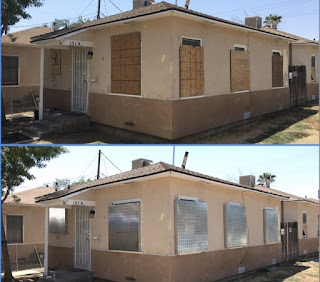How to board up a house or vacant property with Guard Dog Secure
Boarding up a house or vacant building is a crucial step in maintaining the safety, security, and appearance of the property. Whether you're a property owner, landlord, or involved in property management, knowing how to properly board up a structure can help prevent unauthorized access, vandalism, and potential damage. In this guide, we'll walk you through the step-by-step process of effectively boarding up vacant building.
- Assessment and Planning
Before you start boarding up a property, it's essential to conduct a thorough assessment of the building's condition. Identify vulnerable points of entry, such as broken windows, damaged doors, and other openings. Based on this assessment, create a plan that outlines the materials you'll need, the areas that require boarding, and the specific measures you'll take to secure the property.
- Gather Necessary Materials
To ensure a successful boarding-up process, gather the required materials and tools in advance. These typically include plywood boards, measuring tape, a saw, nails or screws, a drill, a hammer, safety goggles, gloves, and a ladder. Opt for plywood that is weather-resistant and sufficiently thick to deter potential intruders.
- Measure and Cut Plywood Boards
Accurate measurements are crucial to ensure that the plywood boards fit securely over windows and openings. Use a measuring tape to determine the dimensions of the areas you need to board up. Mark these dimensions on the plywood and use a saw to cut the boards accordingly. Make sure to cut the plywood slightly larger than the measured dimensions to ensure a snug fit.
- Prepare the Windows and Openings
Before attaching the plywood boards, it's important to prepare the windows and openings properly. Remove any existing glass, debris, or obstacles to ensure a smooth and secure fit for the boards. If there are any jagged edges or sharp objects around the openings, address them to prevent damage to the plywood.
- Attach the Plywood Boards
Position the prepared plywood boards over the windows and openings, ensuring they align correctly. Use a drill to create pilot holes for nails or screws along the edges of the plywood and around the perimeter of the opening. This will prevent the plywood from splitting when you attach it. Secure the plywood in place using nails or screws, driving them through the pilot holes and into the structure's frame.
- Secure Corners and Edges
To enhance the stability and security of the plywood boards, focus on securing the corners and edges effectively. Drive nails or screws closer to the corners to prevent the boards from shifting or being pried loose. Additionally, reinforce the edges with extra nails or screws spaced at regular intervals.
- Seal and Finish
To protect the boarded-up areas from the elements and provide a cleaner appearance, consider applying a weather-resistant sealant along the edges of the plywood. This will help prevent moisture from seeping in and causing damage. Additionally, you can paint the plywood to match the building's exterior, further enhancing its appearance.
- Consider Additional Security Measures
While boarding up is an effective way to secure a property, consider additional security measures for comprehensive protection. Install motion-activated lights around the property to deter intruders, and consider using security cameras to monitor any suspicious activity. Visible signage indicating that the property is monitored can also discourage potential trespassers.
- Regular Inspections and Maintenance
Regularly inspect the boarded-up areas to ensure that the boards remain secure and undamaged. Over time, weather conditions and wear can affect the integrity of the boards and their attachments. Promptly replace any damaged or weakened boards to maintain the property's security.
- Comply with Local Regulations
Before boarding up a property, familiarize yourself with local regulations and ordinances regarding vacant buildings and property security. Some jurisdictions may have specific requirements for the materials used, the duration of boarding, and the appearance of the property.
Boarding up a house or vacant building is a proactive and practical step to safeguard the property from unauthorized access, vandalism, and weather-related damage. By following these comprehensive steps, you can effectively secure the property and contribute to the overall safety and appearance of the neighborhood. Remember that while boarding up is a valuable security measure, combining it with other strategies and continuous vigilance will help ensure the long-term protection of the property.
Alternatively, you could always contact a professional board up service like Guard Dog Secure. They only use steel panels for extra security.


.jpg)
Comments
Post a Comment